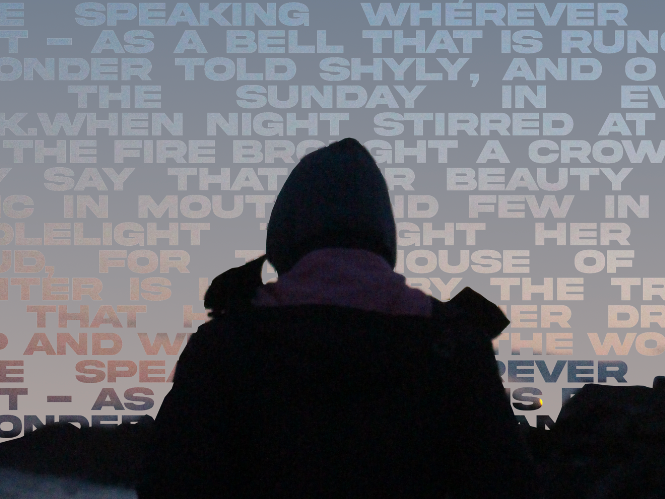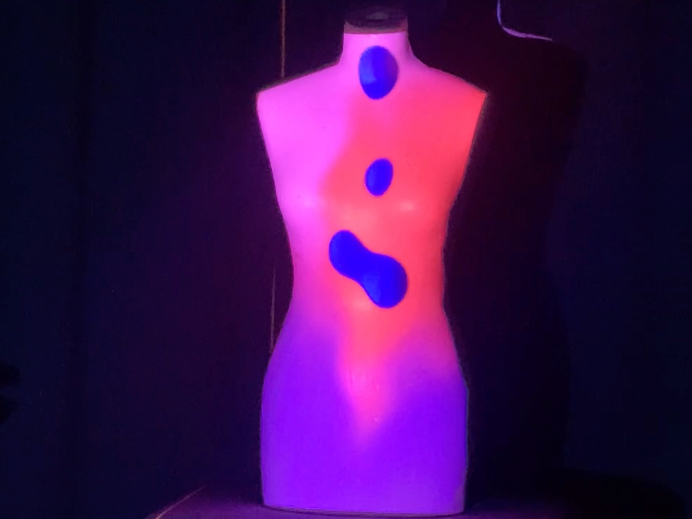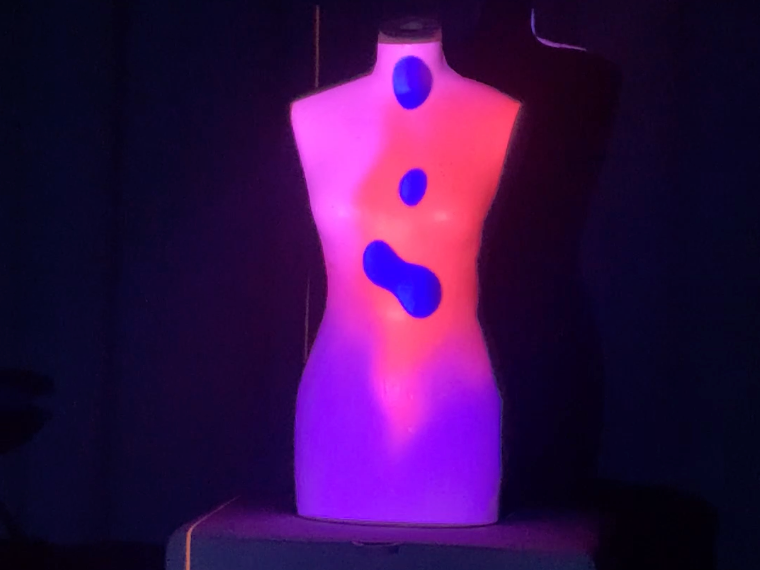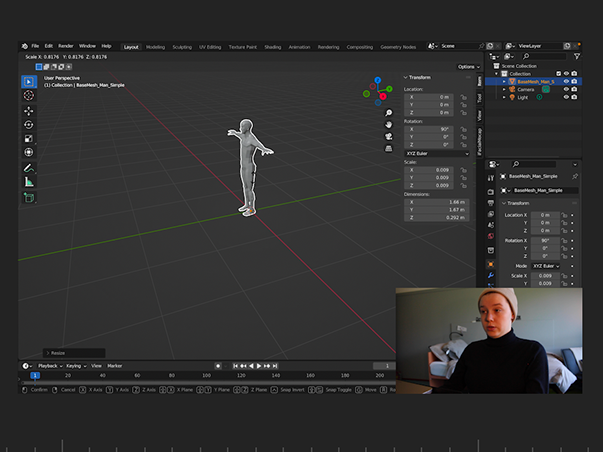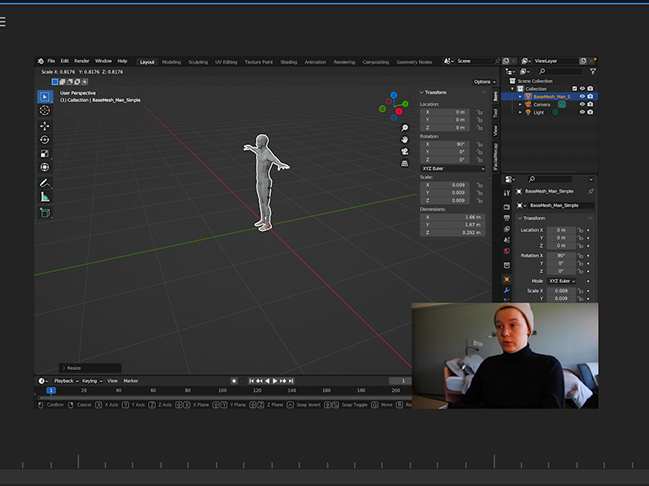Final Product


What I learned
Through this project, I learnt a few things. I learned how media can be used to help us understand and empathise with other people who live in different worlds to us. Those from different races, ethnicities, abilities, etc, with the use of media and audio & visual design you can create a window into the world they live in. Where colours may look different, where music may be a hum, where a book may be a maze. People who don't live this life can not understand it but we can create a sense of understanding with pieces like this.
I also learned about Dutch culture and the significance of Miffy in the country. Miffy is a character that has influenced every child in the Netherlands and can be recognised by every person in the country. They are hugely influential and important to the Dutch as many dutch who grew up in the Netherlands learned about many common things such as zoo animals and fruit and vegetables from the show /books and the character itself.
I also learned how to use two beamers from one touch designer file. Through the use of nulls and Katan mappers and resolutions, I was able to set up two installations including this one from one computer.
Creative research
When Max approached me with the idea, I asked him what was the theme. He told me he wanted to do it on those who are colourblind. I then asked him how we were going to add audio
Visual Disabilities:
1. Migraines
Migraines are a form that usually affects the person with an intense headache, sensitivity to light and sound, and blurry blobs in their vision
2. Legally blind
For those who are legally blind, if an object is 200 feet away, they have to stand 20 feet from it in order to see it clearly. Compared to a person with normal vision who can stand 200 feet away and see that object perfectly.
3. Tunnel vision
If you have tunnel vision, that means your vision is cut off 20 degrees from your direct eye line. For some, that means all vision is lost, for others, it means that they can only see shapes and colours but no detail.
4. Colour Blind
With colour blindness, colours do not appear as they should. Green and red are the most common colours that this condition affects. They can appear less saturated or certain pigments aren't detected by the eye and appear completely different
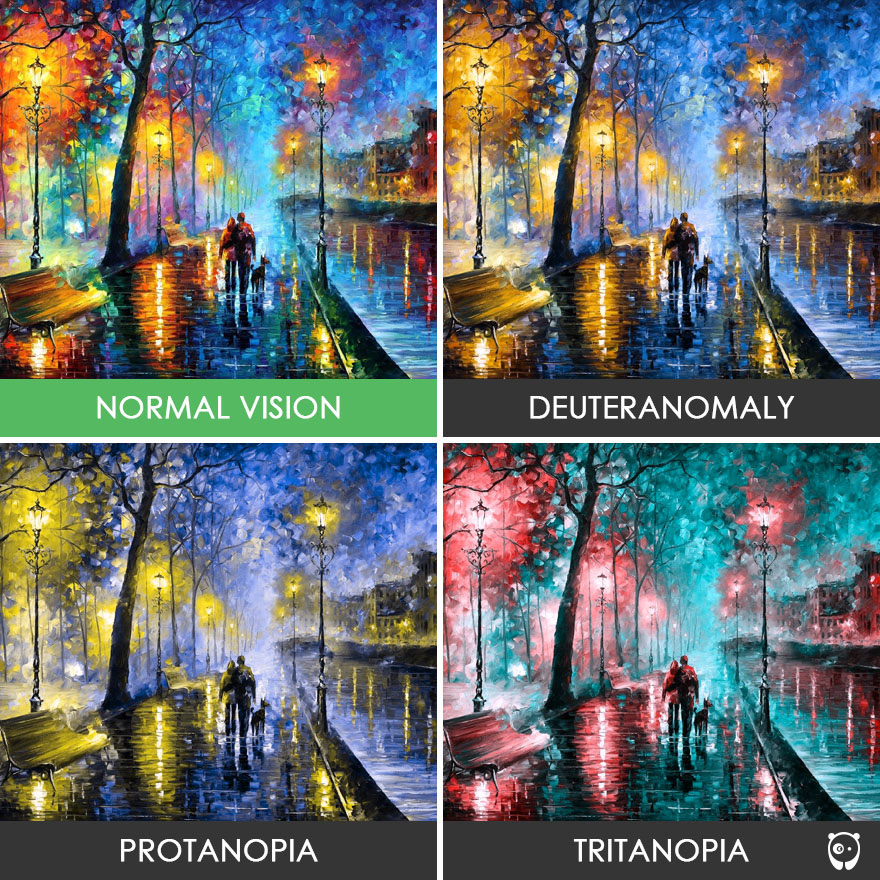

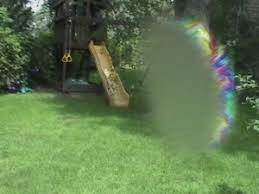

Hearing Disabilities:
To the right are some simulations of the conditions we are trying to recreate.
1. Legally deaf
When you lose 90% of hearing in one or both ears
2. Tinnitus
A ringing or buzzing in your ears. It can be a high pitch buzz or low buzzing, it varies from person to person
3. ADHD/Autism/Dyslexia
People with these conditions can have issues with certain sounds being too focused and overwhelming. Things like the noise a beamer makes and other people talking in the background can be more focused than the thing that they are trying to focus on or become extremely overwhelmed and can't zone it out
4. Ear Infection
Sounds like you have fluid in your ear constantly
editing/construction process
Out concept was to build a hanging slab of wood with many circles of different sizes cut into it so you can see through to the other side. Behind the wooden slab, there is a video playing a popular children's story from the Netherlands with colour visuals to go with it. Each has a different visual altering material in it in them to change how you see the video behind. This represents the different types of visual disabilities.
We plan to have a little speaker just below each circle which will play a different distorted version of the audio for the video. This is to represent different types of hearing disabilities.
Here are concept/layout sketches of what we are planning


The first thing I did was go out into Utrecht City Center and find different materials I thought would be good for the different type of visual disabilities we were trying to portray. I found frosted poly pockets, green bubble wrap, and a fractal transparent foil



We decided to use this story by Miffy. We did this because in Ireland when you are being tested for dyslexia, you are asked to read a children's story as fast as possible. As we are in the Netherlands, we went with a story that everyone here would know. This highlights how even though you may know the story, you will struggle with reading along with it
We tested this mini slab in the green screen room in the HU
We decided on this size of screen because it was large enough that you could get a full experience of the installation but not take up too much space in the exhibit area
We originally decided to start with headphones for when we tested on our peers and then ask Ronald about mini speakers and how we could do the different audios playing. Unfortunately, Ronald didn't have mini speakers and it would be too expensive so we continued on with our headphone idea. I came up with the idea of playing the audio live form Ableton when the person is in the exhibition
We then had to decide what audios we were going to put with which visuals. These are the audios we are linking to each visual:
- legally blind ➡️ legally deaf (profound hearing loss)
- Triton colour blind ➡️ ear infection
- Migraine floaters ➡️ tinnitus
- Tunnel vision ➡️ ADHD/autism/dyslexia (muffled footsteps etc, rereading stuff)
- Triton colour blind ➡️ ear infection
- Migraine floaters ➡️ tinnitus
- Tunnel vision ➡️ ADHD/autism/dyslexia (muffled footsteps etc, rereading stuff)
We decided to link them like this as we felt they made a more obvious connection to each other. We considered mixing them up a bit and not having them super linked but we thought it may confuse the audience
I then made a smaller mock-up of what we hope to make in the future using the materials I gathered today. It worked out quite well.
I put two layers on the second circle shown in the video which I think in the next modification I should change to only one layer.
I also think we should add two more circles, one with tunnel vision, and one where there are "floaters" which are common for those with migraines and can be achieved by attaching a plastic bag filled with water and a few drops of glycerine in the bag and shaking the bag every once and a while
Lastly, I think we may have to make the colour-blind aspect more obvious to fit with our initial idea.
I then recreated the mini experiment slab into a full-size one out of cardboard with the alternations to the filters we decided on. I have not completed the tunnel vision circle as I did not have materials to create it. We did this in class a few days later
I then got a piece of wood that was 62cm x 42cm and used the laser cutter in the Makerspace to create the finished board. It was much smaller than we originally wanted but we thought the wood finish would look better and more HiFi compared to the larger cardboard one.



After getting feedback from our mini-expo we did two things. We added little tabs over the disability identifiers. This was done based on feedback from Caro who suggested we make it more revealing and have people try and figure it out
We also added a permanent cone instead of one that hangs next to the circle as we noticed many people were not using the cone/missing it and were not getting the full affect of the installation
